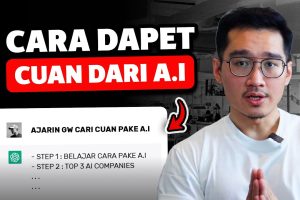Data is at the heart of AI, and in this episode, we are talking to a leading Insurance Chief Data Officer about the critical role that data plays in creating an AI strategy.
Louis DiModugno is the managing partner of Data Curiosity, a consultancy specializing in data preparation, governance, lineage, master data management and the integration of large language models (LLMs). He has been a chief data and analytics officer for two large global insurers where he laid the groundwork for data strategy, technology, architecture and operational excellence. Louis is also a retired U.S. Air Force Colonel and a Six Sigma master black belt.
Here’s a brief excerpt of our conversation with Insurance Unplugged host Lisa Wardlaw and Louis DiModugno.
The Connection Between AI and Data Science
Artificial intelligence is an aspect of data science, and data science encompasses data and all the ways it is used. AI covers a broad spectrum where we can use tools that mimic decision making or the knowledge base of a human while utilizing the processing and storage power to optimize the data. Within AI, we have subcomponents, such as machine learning which develops algorithms and models that enable computers to learn from data and make predictions without being explicitly programmed.
Think About Your Data Strategy
You have to have a long-term strategy around how you are going to aggregate, integrate and improve the accuracy of your data to be utilized within any model going forward. The challenge with that is really understanding that data is a multiplicative issue and not an additive issue. If you have a data source that is working at 90{97051cd8e998b34912ac79aefee8c00fc5f765117d5ca4c399611c74a2c4abbf} accuracy and you add another data source that’s also at 90{97051cd8e998b34912ac79aefee8c00fc5f765117d5ca4c399611c74a2c4abbf}, you don’t have two data sources that are now at 90{97051cd8e998b34912ac79aefee8c00fc5f765117d5ca4c399611c74a2c4abbf}. You have one data source that’s actually closer to 80{97051cd8e998b34912ac79aefee8c00fc5f765117d5ca4c399611c74a2c4abbf}.
The increase in accuracy has to be paramount for any data organization. This comes from governance, really understanding your data and where it’s coming from, its sources, how to improve its accuracy over time, and how to lift the level of confidence associated with those data sets going forward.
Making the Data Case for Your AI Strategy
When it comes to your AI strategy, you really should be looking at things with the end in mind.
Because data is critical to any AI project, we have to start with an understanding of what it is we want to achieve. Ask: Is it an effectiveness, efficiency or decision-making opportunity?
Now, utilize the components of your data to help feed what it is you’re trying to solve for. Next, focus on the tactical aspects of how to increase the accuracy of the data elements that will be used for that particular AI use case to focus on how you can get some value quickly. As more data is available and more accurate data is available, I can increase my confidence in the outcomes of that model.
So, how do you respond when someone says, “I have to do AI” but the data folks, the CDO, says that your data strategy is not mature enough?
When we’re talking about data, there is not always a linear path from input to output. We have to think with an experimentation mindset. So, it’s try and fail. It’s seeing what data works and what data doesn’t work. Can I buy some data from a third-party vendor that can maybe augment or bring some highly valued information into the model?
The challenge there is, with the “end” in mind, can I experiment, and can I experiment fast enough to, 1) make sure I’ve got a good data set, and 2) have the resources to go ahead and exploit it through some model building exercise.
When to Use AI: Questions That Need Answers
Once you have the data questions answered, you will want your CDO and your business side aligned.
Your non-technical folks must understand what the AI is capable of:
- What can we do with these tools?
- What is the question you’re trying to answer?
The answer to this second question is probably the most challenging. DiModugno breaks it down into 3 categories:
- Efficiency: how can I become more efficient with the resources that I’ve got?
- Effectiveness: how can I be more effective around meeting my customer expectations or identifying new product capabilities out there?
- Decision making: what decisions can I help make better because I’ve distributed or orchestrated a model that helps people to see the information in a better light to be able to consume it better.
These areas are really what AI tools tend to be focused on: what decisions can I help make better because I’ve distributed or orchestrated a model that helps people to see the information in a better light to be able to consume it better.
So, there’s not only the understanding of “what am I asking,” but when I get an answer, how do I interpret that answer? The business side must be able to understand: what can I use this for? I have this powerful tool: where am I going to use it and for what?
Advice for the Insurance C-Suite
Here are 4 calls to action for insurance companies and AI, no matter what stage they are in.
- Prioritize privacy and data security. If you’re going to put proprietary data into an open source LLM, you have to have fences around the data as to how it’s being incorporated and how it’s being consumed.
- Regulation is knocking. Regulation is coming in the European Union and in the US. But the bigger challenge is a scenario where everyone is not playing by the same set of rules. Either way, companies have to prepare for this now.
- Data credibility is key. It always comes back to the data and to the truthfulness of the input. If you’re using ChatGPT and large language models, you will have some real challenges in terms of identifying the source of your data. Did the answer come from my proprietary information, or did it come from a novel that was written 30 years ago? This is a valid question that will become even more important over time.
- Make change management part of your strategy. AI is going to create change within an organization. Organizations must prepare for those changes on a cultural level and really understand how to implement AI and make the part of the culture. Companies must really understand how these technologies are going to influence your value proposition. Here, education is key, for the C suite and throughout the organization.
Listen to the full conversation between Louis DiModugno and Lisa Wardlaw on the Insurance Unplugged podcast.
Listen to Insurance Unplugged
Join host Lisa Wardlaw for this expert.ai-sponsored series of candid conversations with industry leaders about the world of insurance. New episodes drop every Wednesday! Subscribe or click to listen in!












